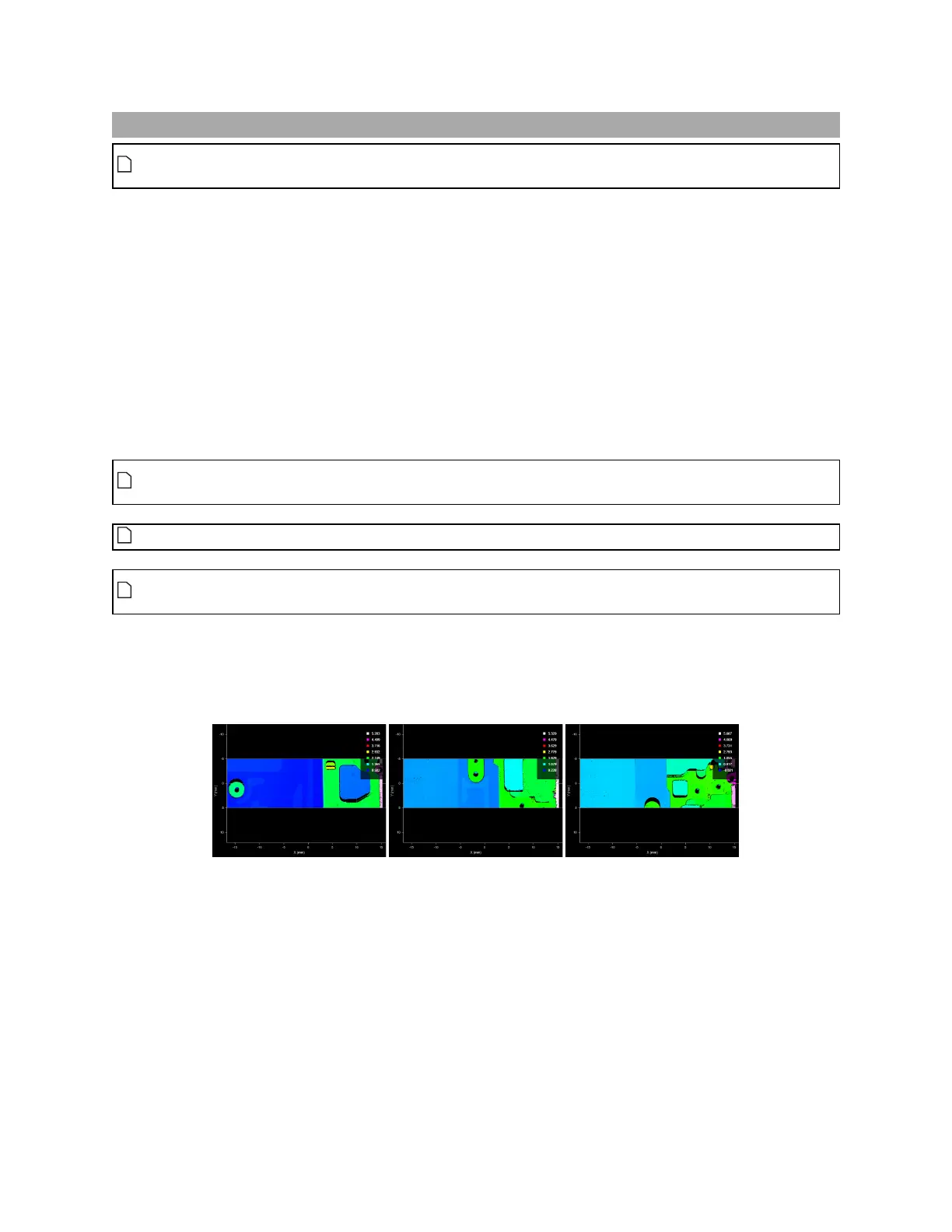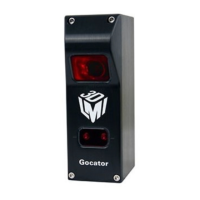Gocator Line Profile Sensors: User Manual
Gocator Web Interface • 366
Stitch
This tool is not supported on A and B revision Gocator 2100 and 2300 sensors. It will however
appear in emulator scenarios created using these sensors.
The Stitch tool lets you combine up to 6 frames of scans into a single Surface scan. This lets you get a
much larger scan volume with fewer sensors (either in a single sensor system or a multi-sensor system).
For each scan, you can specify not only X, Y, and Zoffsets (translations), but also X, Y, and Zangles
(rotations), defining its relationship with the others. This means that when the sensor system is mounted
to a robot, or if you are using, for example, an X-Ytable, you can get a complete scan with fewer sensors.
The resulting combined scan can then be used as input by any other Surface or Feature tool from its
Stream drop-down.
The tool performs rotation first, and then translation.
You cannot define sections on the combined scan; for more information on sections, see Sections on
page 190.
The tool combines data simply by overwriting in sequence:it performs no averaging or
blending. The tool also performs no fitting.
Results are only as accurate as the motion system.
Seams are often seen in combined data in stitching performed in anything other than along the
Yaxis.
The tool returns one measurement, which simply indicates the number of scans successfully added to
the combined scan data.
The following shows individual frames:
In the following, a combined surface is shown.
